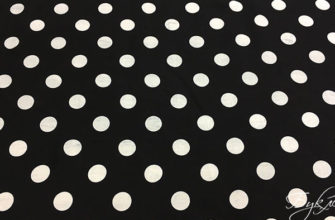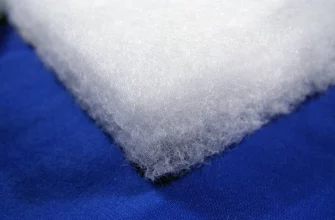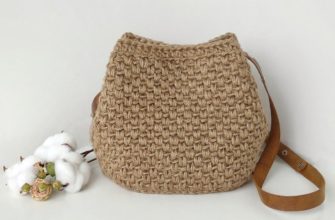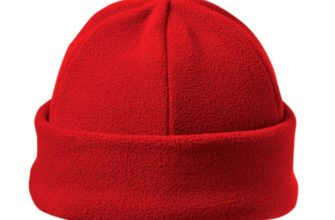Melange is a color associated with a mixture and has a wide range of uses. The term is used everywhere: in the chemical, culinary, construction and geological fields. A particularly interesting interpretation of melange is in the handicraft and textile industries.

Melange - what color is it?
It is impossible to determine what color mélange is. In fact, such a tone does not exist at all. This term refers to mélange yarn, which consists of multi-colored fibers.
Thus, melange is a woven fabric that is formed by using single-thread or twisted yarn from fibers (threads) that differ in color. The shade of the raw material can be contrasting or differ in tonality.
The finished result is a fabric with a specific pattern that resembles polished marble chips. The higher the contrast of the fibrous elements, the more expressive the textile becomes. Depending on this, there are two main types:
- "Grainy". Looks mottled up close, but from a distance it takes on a single shade.
- "Gradient". All tones of one color smoothly transition from one to another.
Each company produces melange fabric using different technologies and methods, and the color combinations also differ.
Grey melange and other colors
Grey melange is the most popular type of fabric. The version with dark accents is more common.
This true classic has the following advantages:
- restraint;
- harmonious ensemble with all color spectrums.
The color gray melange looks beautiful with other shades, favorably shading them:
- apple and salmon, which creates a sensual and sweet composition;
- carmine and alizarin add some dramatic effect;
- orange, tangerine, powder - neutralizes active sunlight.
Attention! The grey melange material is used in clothing. All winter sweaters and sweatshirts in mass-market stores are made from the described fibers.

Melange anthracite
Anthracite is an elegant color reminiscent of wet asphalt. It is used in clothing design, but also looks stylish in interior solutions.
Interior designers place emphasis on:
- warm tones with yellowness;
- gray pearl;
- in shiny grey.
Interesting! The anthracite melange colour highlights the bright elements in the room and presents all elements in a new, advantageous light.
Melange beige
Beige melange is most similar to skin color. Flesh color is divided into several spectra, which are combined with other shades in their own way.
Beige goes well with the following colors:
- royal pink, sunset pink, lilac, fuchsia and raspberry. Warm shades complement and create a pastel cozy color scheme, cold ones create a warm-cold contrast;
- scarlet, coral red, ruby, wine and burgundy. This ensemble exalts red in a new color and lights a fire;
- peach, coral, golden, copper and red;
- pale yellow, sunny, banana, saffron and gold;
- warm and cool greens (pistachio, chartreuse, olive, khaki, emerald and malachite).
For your information! Beige also makes a striking pair with blue and purple tones, creating a clashing ensemble.
Blue melange
Blue melange is a very original combination of aristocracy and practicality. Depending on the color pairs, the blue palette takes on a new light:
- to create thermal contrast, peach, soft pink, scarlet, Chinese red, wine, red zircon and rose, mango, apricot, and curry are used;
- A cool, harmonious combination of blue looks spectacular with apple green, pine green, neon green, malachite and pale menthol.
A harmonious combination with a neutral palette always looks advantageous.
History of color
When used correctly, mélange looks rich and dramatic. However, it wasn't always that way.
Clothes made of grey melange were worn only by the poor who could not afford luxurious satin, soft silk. For example, cleaners, tradesmen, servants.
At that time, the production of melange (petstryad, at that time) was carried out by processing coarse cotton. It was not distinguished by its particular visual sophistication, but it could easily compete in durability.
At the end of the twentieth century, famous fashion designers saw in the material not only practicality, but also beauty. Thus, melange fabric in all sorts of variations appeared in many collections.
Currently, the following are used to create fibrous materials:
- cotton yarn;
- dyed cotton fibers;
- natural wool;
- synthetic fibers.
Its main advantages are considered to be a huge variety of colors and excellent performance properties. Due to this, melange is used in many industries.
How Melange is Used in Clothing
Different types of material are used to make clothes:
- Drape. Woolen textile of two or more colors that retains heat. Due to its special structure, there are no gaps between the tightly packed threads. It is used for sewing coats for the demi-season or winter period.
- Broadcloth. A thin variation of the first, resembling felt. Used to make suits for men.
- Cheviot. A smooth woolen or mixed fabric, also containing cotton threads. Cheviot fabrics are used to make trousers, jackets and uniforms.
- Tights.
- Covercoat - characterized by a rib. Due to its unusual style, it resembles tweed.
Synthetics in mélange provide an extraordinary visual effect and relief of textiles. Such application guarantees improvement of fabric characteristics:
- elasticity;
- no dents;
- strength;
- does not shrink after washing.
Melange fabric is used to create street style clothing: T-shirts, pants, sweatshirts, tank tops and shorts. However, despite its versatility, melange in clothing requires care:
- Hand or machine wash in warm water.
- Ironing is permitted only on the reverse side.
- Drying, protected from active sun.
- The use of bleach is prohibited.
Melange looks great in sporty, casual and formal styles. However, it is not recommended to use the material for creating evening dresses.
Application in interior
Melange can look different every time. Its external parameters change dramatically depending on the incidence of sunlight and the viewing distance. Even shiny fabric with sequins or lurex cannot boast of such an effect.
The surface of the melange textile is characterized by the presence of bumps and irregularities. The described property adds an additional decorative effect. The delicate and soft fabric looks fleecy to the touch, due to which it is used in the interior.
The melange textile group is developed on the basis of the following materials:
- cotton;
- flax;
- synthetic fibers.
Due to its high wear resistance, melange fabric is used in the production of upholstery for upholstered furniture, blankets, covers for armchairs or sofas. Light and dark yarn is used to complement interiors of certain styles. These include:
- antique style. Used to create tapestries, runners in wine colors and furniture upholstery in the same tone;
- Bauhaus. Melange covers with gradient coloring in a neutral color combination;
- Biedermeier;
- boho. Motley fabric is used to create bright splashes;
- avant-garde - a new look at practicality;
- Gzhel - blue palette paired with cold tones;
- grunge. Natural melange without synthetic fibers, etc.
The use of melange is not only a practical move, but also an excellent statement in terms of design solutions.
Tapestry making
Tapestry is a type of decorative and applied art, which is a one-sided, lint-free carpet with a well-thought-out storyline (composition), made by hand by cross-weaving thin threads, like hair.
Until the eighteenth century, fine works were created with wool, mostly sheep wool. The animals were then required to be fed high-quality food so that the wool would be soft. Now, however, mélange is widely used, since the main requirement in tapestry is durability.
Wool fibers are often combined with linen, silk, cotton threads, horsehair and garus. This combination allowed for playing with lightened and colored areas, creating a separate picture.
When answering the question of what color is melange, it is impossible to find a specific explanation. Melange is a material with a complex structure, which combines not only different components, but also varies in color. Due to its many properties, textiles have found application in many areas: from creating designer clothes to decorating a home.




